Map of Ottoman Empire at Its Peak(Height)
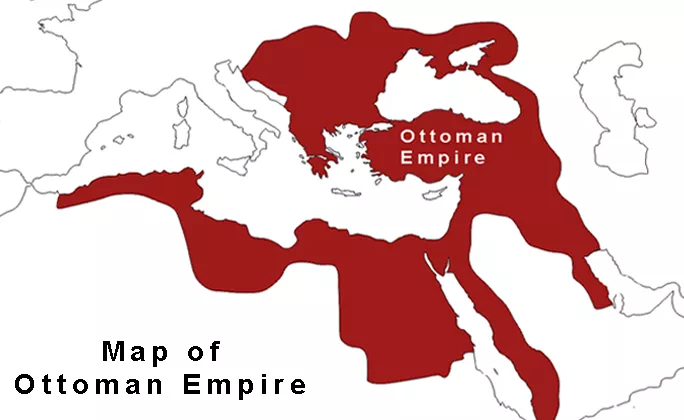
The Ottoman Empire was a great empire that conquered Anatolia, the Balkans, the Middle East, North Africa, and the Arabian peninsula for 624 years. In this article, we will share with you the establishment of the Ottoman Empire, the most successful sultans, the peak of the Ottoman Empire, the stagnation period of the Ottoman Empire, the decline of the Ottoman Empire, and the map of Ottoman empire.
1. The Foundation of the Ottoman Empire
In 1299, Byzantine and Anatolian Seljuk states were ruling in Anatolia. The Anatolian Seljuk state could not withstand the Mongol attacks and collapsed. The Anatolian Seljuk state was divided into 16 different principalities, one of which was the Osmanogullari principality, which would later take the name Ottoman.
The name Osmanoğulları comes from its founder, Osman Gazi, and 1299 is accepted as the foundation year of the Ottoman Empire. It was established in the city of Bilecik-Söğüt, which is located in the territory of Turkey today.
Osmanogullari principality also has the region which is accepted as the Anatolian side of Istanbul today and is neighbor to Byzantium.
Note: The title of Gazi means warrior in Turkish. It is used for the leaders of the Ottoman Empire, which was a small principality in its founding year. Later, they would take the titles of sultan and emperor.
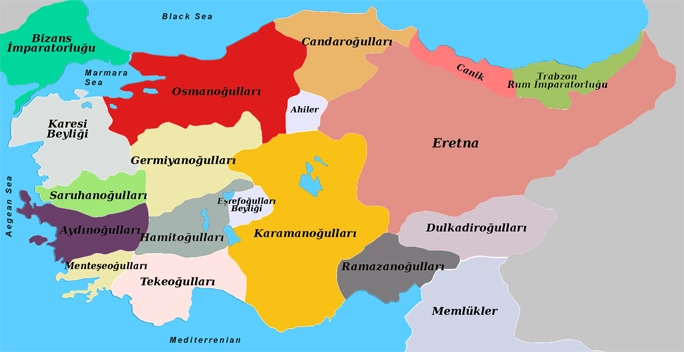
The founding story of the Ottoman Empire and the Dream of Osman Gazi
It is claimed that the foundation of the Ottoman Empire was told in the dream of Osman Gazi. According to rumors, the founder of the Ottoman Empire, Osman Gazi, saw in his dream that a moon rose from the bosom of Sheikh Edebali (Turkish religious leader), entered his bosom, and the tree coming out of his navel covered the whole world.
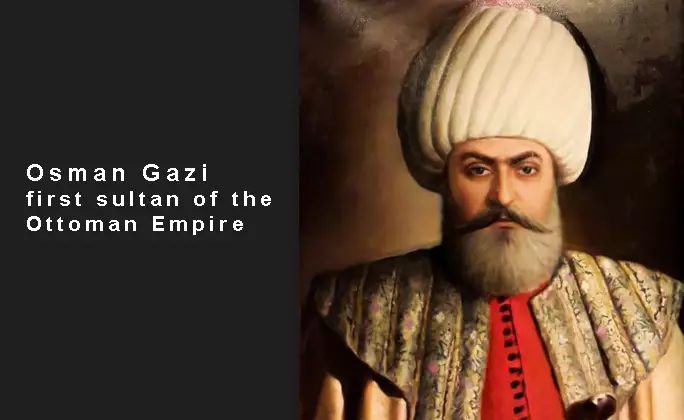
2. The first sultans of the Ottoman Empire and wars
The period between the establishment of the Ottoman Empire in 1299 and the conquest of Istanbul in 1453 is called the founding period, and the sultans in this period are known as the first Ottoman sultans.
Let’s look at the first Ottoman sultans and their important wars together.
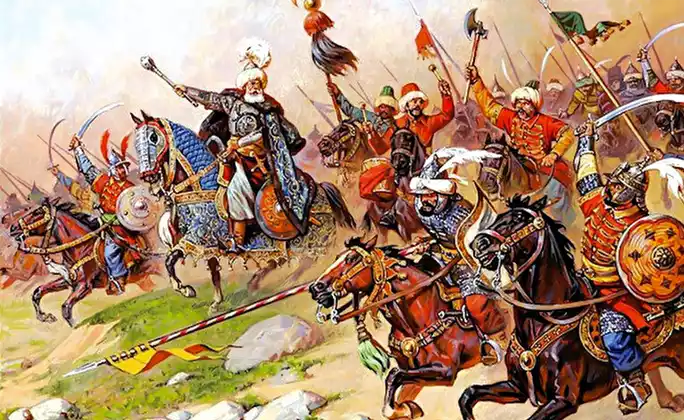
I. Osman(Osman Gazi) and the first wars of the Ottoman Empire
The first wars of the Ottoman Empire during the principality phase were always with the Byzantine Empire. The Byzantine Empire is in decline and although it asked for help from the Papacy, it could not get help due to the wars in Europe.
The war of Koyunhisar, which was fought in 1302, is the first war of the Ottoman state and was fought between the Ottomans and Byzantium. Today, the war in Turkey’s Yenişehir region resulted in the victory of the Ottoman state, and the Byzantine Empire recognized the Ottoman Empire after this war.
The war of Dimbos in 1303, the war of Karahisar in 1308, and the wars of Lefke, Mekece, Akhisar, Geyve, and Gölpazarı between 1313-15 were fought with the Byzantine Empire and all wars were won by the Ottoman state.
Orhan Gazi and wars
Orhan Gazi, the son of Osman Gazi, became the head of the principality after the death of Osman Bey. Orhan Gazi, who spent his whole life in wars, conquered the city of Bursa and made it the capital of the Ottoman Empire.
Orhan Gazi conquered the southern Marmara and Thrace regions outside the historical peninsula region of Istanbul, which was under Byzantine hands.
- Between the years 1321-1326, the cities of Yalova and Sakarya in Turkey today,
- Bursa City in 1326,
- İznik City in 1331,
- İzmit City in 1337,
- Gallipoli and Çanakkale city in 1353,
- Ankara city in 1354,
- In 1361, the Thrace region was conquered.
I.Murad and wars
I. Murad is the sultan who transformed the Ottoman Empire from a principality to a state. He established the first artillery unit of the Ottoman Empire and the Ottoman elite unit, the Janissary corps.
I. Murad completely turned his direction to the Balkans and made many conquests by winning many wars. He is one of the most important sultans in the history of the Ottoman Empire.
The wars between the Christian Union army called the Crusades and the Ottoman Empire started in this period. I. Murad participated in 37 wars in total and Edirne, Macedonia, Thessaloniki, Nis, Shtip, Manastır, Ohrid, and Sofia were conquered by the Ottomans. Serbia and Bulgaria lost as a result of the war and agreed to pay taxes.
After the capture of Edirne, the most important city of the Byzantine Empire after Constantinopolis, Edirne was declared the capital, and three sides of the Byzantine Empire were surrounded.
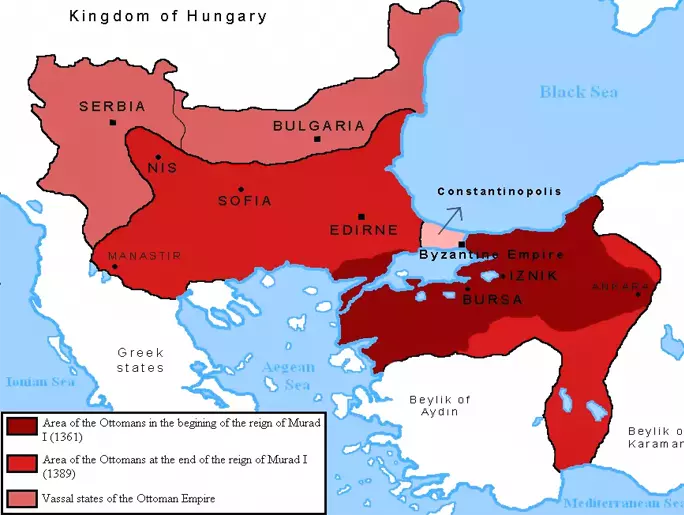
3. Janissaries and the Ottoman military system
Janissaries(Yeniçeriler)
Janissaries are the training of Christian children in the regions conquered by the Ottomans with the tax system, taking them to Anatolia and raising them as Muslim soldiers. If there was more than one boy in the family, one of them was taken, first converted to Islam and circumcised, and then given to a Turkish family to learn about their customs and traditions in Anatolia. When the children were old enough to do their military service, they went to the Janissary Corps in Topkapı Palace and received military training.
The duty of the Janissaries, considered the world’s first professional regular army, was to protect the sultan and fight in the name of Islam. Janissaries regularly received a salary called Ulufe. They were forbidden to marry and trade until the age of 40.
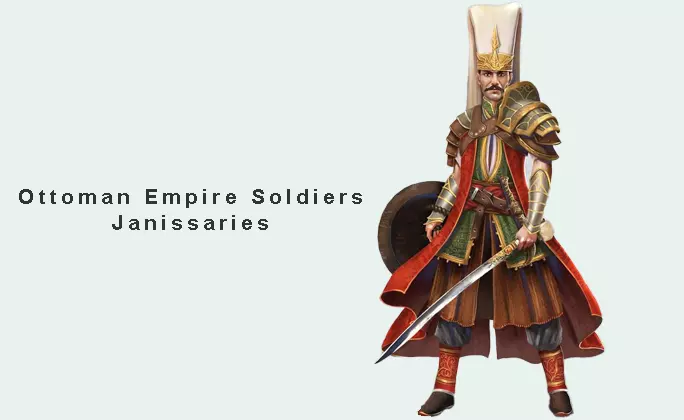
Sipahiler
Timarlı Sipahi’s another regular Ottoman military unit. It is generally composed of Turks and passed from the Seljuk state to the Ottoman Empire. There is a special tax system for this military unit. They collected taxes in the region they were in, met their own needs, and trained new soldiers.
The Ottoman cavalry unit is considered to be heavy-duty soldiers, and its equivalent in Europe is knights. Their mission is to join the war in wartime and to protect their territories in peacetime.
Kapikulu Sipahi’s
It is the military unit where Turkish and devshirme soldiers, who are considered superior in fighting and riding, are specially selected and trained in the Kapıkulu hearth. They are fewer in number and the duty of this union is only to protect the sultan and the palace.
Kapikulu Sipahi came to important positions such as civil servants and viziers with their superior skills during the reign of Suleiman the Magnificent.
Raiders(Akıncılar)
All of the raiders are Turks. Their mission is to provide security along the border and to loot and break the enemy’s power by organizing irregular attacks on enemy states. They make important raids during war times.
4. Ottoman Empire map at its Peak(Height)
The period starting from the conquest of Istanbul until the death of Suleiman the Magnificent is known as the rise of the Ottoman Empire. During this period, the Ottoman Empire conquered parts of Istanbul, Belgrade, Budin, Algeria, Egypt, Libya, Saudi Arabia, Iraq, Syria, and Iran.
The Ottoman Empire at its Peak This period reached the Ottoman Empire Map.
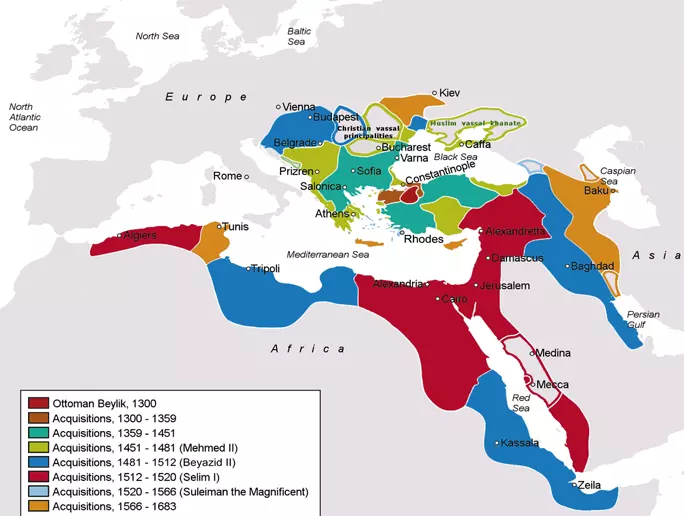
Conquest of Istanbul or Conquest of Constantinople
Constantinople is the capital of the Eastern Roman Empire and is a very valuable city due to its location as it unites Asia and Europe.
The city, called Constantinopolis, is today the historical peninsula of Istanbul and is surrounded by very strong castle walls. Constantinople was previously besieged by the Umayyads, Abbasids, and the Ottoman state, but they could not conquer the city because they could not pass these strong walls.
II, who came to the throne in 1451. Mehmed’s only dream is to conquer Constantinople. As soon as he came to the throne, he started preparations for the siege of Constantinople and had heavy artillery built that could destroy the strong Istanbul walls and built the Rumeli Fortress to prevent the help that could come to Byzantium from the Bosphorus.
The siege of Constantinople, which started in 1453, was not going as the Ottomans wanted. Due to the chains attached to the Golden Horn, the ships could not approach Istanbul. For this reason, ships were landed overnight by today’s Galata and met in the Golden Horn Strait.
The walls in the Golden Horn are the weakest point of Constantinopolis and the conquest of Istanbul took place after the ships arrived here.
With the conquest of Constantinople by the Ottoman Empire, it is accepted that the Middle Ages ended and the New Age began. With this conquest, the Eastern Roman Empire was completely destroyed.
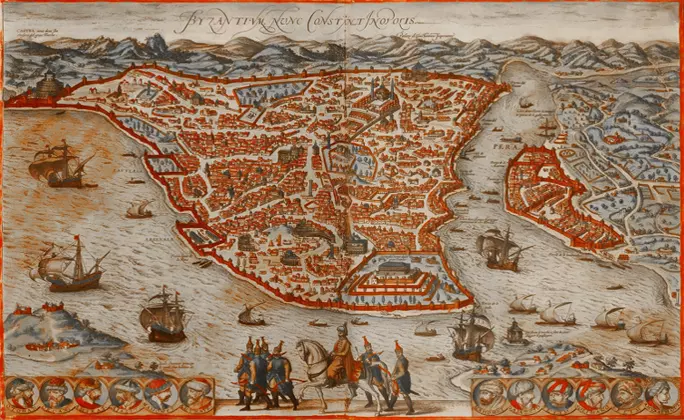
Suleiman the Magnificent and his Conquests
Suleiman the Magnificent, along with Fatih Sultan Mehmet, is the most well-known Ottoman Sultan. The widest borders of the Ottoman Empire reached Suleiman the Magnificent. During this period, his vizier Pargalı İbrahim and Hürrem Sultan came to the fore.
The biggest dream of Suleiman the Magnificent was to conquer Rome and become one of the most important turning points of the Ottoman Empire, like Mehmed the Conqueror, but he could not achieve this.
During the reign of Suleiman the Magnificent, Belgrade, Hungary, Rhodes, Algeria, and Tripoli joined the Ottoman lands. The war of Mohacs with the Kingdom of Hungary is one of the wars that resulted in the shortest time in the world, and at the end of the war which lasted for 2 hours, the army of the Kingdom of Hungary was destroyed by the Ottoman Empire.
Sultan Suleiman began to be called Kanuni because of the laws he enacted. He was called Suleiman the Magnificent because of the large lands he gained and the largest lands reached by the Ottomans.
During the reign of Suleiman the Magnificent, it became the largest naval power in the Mediterranean under the leadership of Hızır Hayrettin Pasha.
You can read more about Sultan Suleiman the Magnificent.
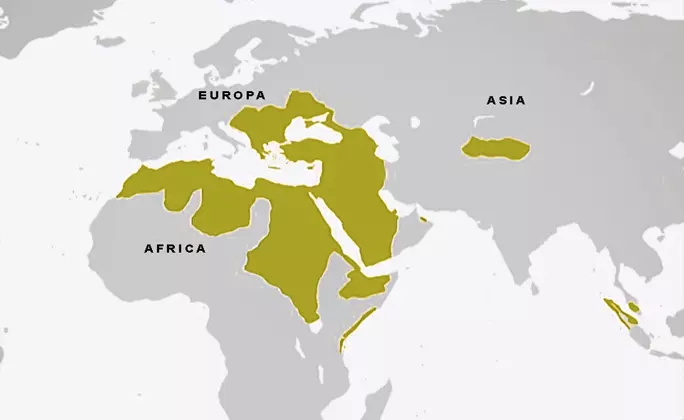
5. Hayreddin Barbarossa Pasha and Ottoman Naval Power
The naval power of the Ottoman Empire reached its peak with Hayreddin Barbarossa Pasha. Ceyazir, Morocco, and today’s Libya were occupied by Hayreddin Barbarossa.
Hayreddin Barbarossa, who served during the reign of Suleiman the Magnificent, played an important role in the conquest of Rhodes and the Aegean islands.
The greatest victory of Hayreddin Barbarossa Pasha is the naval victory in Preveza. Hayreddin Barbarossa Pasha and Pope III. The Crusader fleet gathered under the leadership of Paulus fought.
Although the Crusader navy was bigger and stronger, Hayreddin Barbarossa won the war and achieved a great victory.
The Ottoman naval power consisted of small but fast warships called “galleys”. Hayreddin Barbarossa Pasha died due to illness in Istanbul just before Sultan Süleyman. Today, his statue and his belongings are exhibited in the Maritime Museum in the Beşiktaş district of Istanbul.
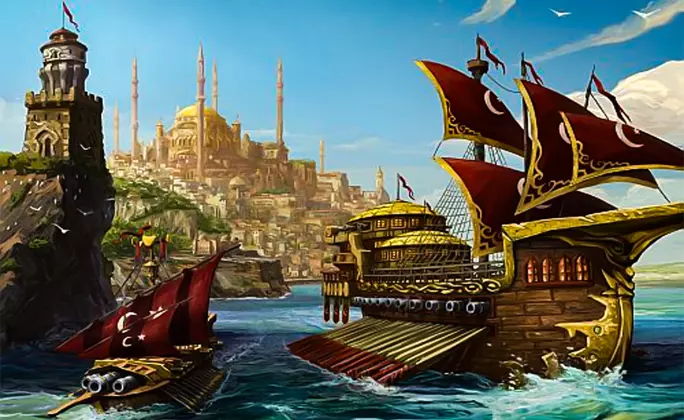
Piri Reis
Piri Reis is the most important explorer of the Ottoman Empire. He is known for his nautical chart showing even the coasts of America, and he made the first detailed nautical chart. The Piri Reis map was used by sailors at that time and is a very respected person in the world.
You can read more about Piri reis.
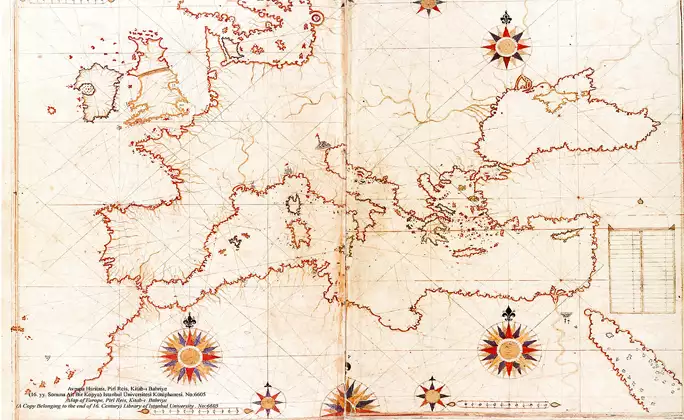
6. Ottoman Empire Decline Period – Tulip Era
After the death of Suleiman the Magnificent, the Ottoman Empire entered a period of decline. This period is also known as the tulip era.
In this period, especially the military system began to deteriorate. Turks began to be recruited into important military units such as the Janissary Corps, which were recruited only from Christians, and marriage and trade bans were broken.
The Timar tax system, which is economically and militarily important, was corrupted by bribes and sufficient financial resources could not be provided.
The number of Janissary soldiers increased a lot and they did not want to fight because they got married and engaged in trade. With the deterioration of the tax system, the salary payments of the soldiers, whose numbers increased, started to be a problem and riots broke out in big cities such as Istanbul.
In this period, expenditures such as entertainment, liquor, and jewelry increased, and constant entertainment began to be organized among the people of the palace. This situation reduced the trust of the impoverished people in their sultans and started rebellions.
Due to the revolts, the sultans began to change constantly and the fight for the throne began in the Ottoman dynasty. Due to the accession of the Sultans at a young age, the Sultans (Women) began to rule the Empire and entered into competition with other Sultans.
This period is known as the tulip era because of the luxurious expenditures and the decoration of Istanbul with tulip flowers.
In this period, the Ottoman Empire, which was interested in its own internal problems, fell behind in the industrial race in European countries and started to fall into a weak situation.
The Ottoman Empire, which lost the war with Russia and had to sign the Karlowitz Treaty, has now entered a period of collapse.
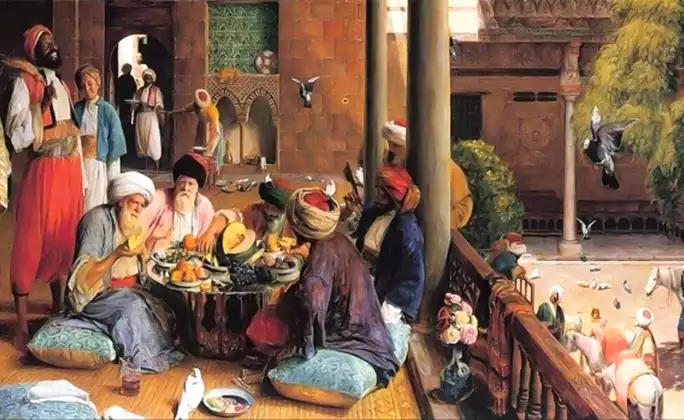
7. Ottoman Empire Dissolution Period
The Ottoman Empire lost the war with the Russian Empire, and the Russian army advanced to Istanbul. With the heavy agreements signed at the end of this war, the Ottoman Empire lost a lot of land.
With the increasing nationalism with the effect of the French Revolution, the rebellions that started in the Balkans, on the other hand, gained independence from Greece, Hungary, Bulgaria, and Serbia one by one.
Egypt was occupied by the British army and Ottoman trade suffered a great loss.
The Ottoman Empire entered the 2nd World War with Germany and lost all the wars it entered except the Battle of the Dardanelles Straits. The map of the Ottoman Empire, which lost all its lands, was determined only as Anatolia.
The Ottoman lands that makeup today’s Turkey were occupied by Greece, Italy, France, and England.
The War of Independence, which started under the leadership of Mustafa Kemal Atatürk, was won and the Ottoman Empire was destroyed and the Republic of Turkey was established.
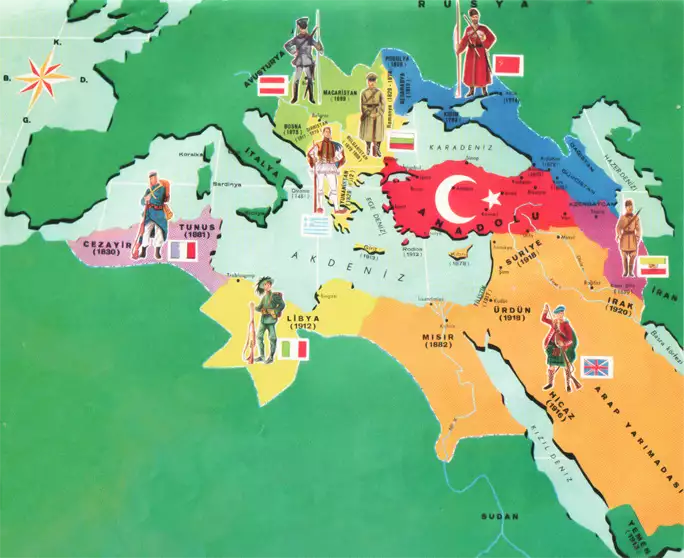
Ottoman Empire Map and General Information
We will talk about Ottoman Empire Maps and general information about the Ottoman Empire under different headings.
Location of Ottoman Empire
The Ottoman Empire was a principality established in Asia Minor. His first target was the east of Europe (Balkans). Later, it spread to Anatolia, the Middle East, and North Africa.
The Ottoman Empire is one of the rare empires that ruled on 3 different continents.
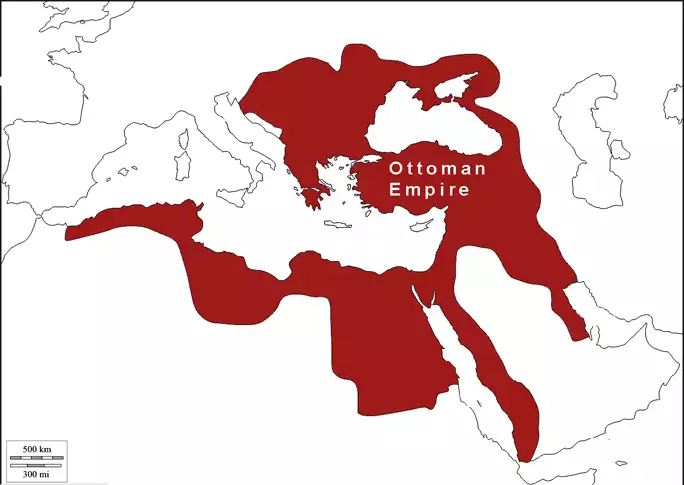
Sultans of the Ottoman Empire
Many sultans have changed due to the riots after Suleiman the Magnificent. For this reason, during the decline of the Ottoman Empire, it was ruled by sultans you have probably never heard of.
- Osman Gazi (1299 – 1326)
- Orhan Gazi (1326 – 1359)
- I. Murad (1359 – 1389)
- I. Bayezid – Yıldırım Bayezid (1389 – 1402)
- I. Mehmed (1413 – 1421)
- II. Murad (1421 – 1451)
- Fatih Sultan Mehmed (1451 – 1481)
- II. Bayezid (1481 – 1512)
- Yavuz Sultan Selim (1512 – 1520)
- Kanunî Sultan Süleyman (1520 – 1566)
- II. Selim (1566 – 1574)
- III. Murad (1574 – 1595)
- III. Mehmed (1595 – 1603)
- I. Ahmed (1603 – 1617)
- I. Mustafa (1617 – 1618 / 1622 – 1623)
- Genç Osman (Young Osman) (1618 – 1622)
- IV. Murad (1623 – 1640)
- İbrahim (1640 – 1648)
- IV. Mehmed (1648 – 1687)
- II. Süleyman (1687 – 1691)
- II. Ahmed (1691 – 1695)
- II. Mustafa (1695 – 1703)
- III. Ahmed (1703 – 1730)
- I. Mahmud (1730 – 1754)
- III. Osman (1754 – 1757)
- III. Mustafa (1757 – 1774)
- I. Abdülhamid (1774 – 1789)
- III. Selim (1789 – 1807)
- IV. Mustafa (1807 – 1808)
- II. Mahmud (1808 – 1839)
- Abdülmecid (1839 – 1861)
- Abdülaziz (1861 – 1876)
- V. Murad (30 Mayıs 1876 – 31 Ağustos 1876)
- II. Abdülhamid (1876 – 1909)
- Mehmed Reşad (1909 – 1918)
- Mehmed Vahdeddin (1918 – 1922)
Ottoman Empire Maps
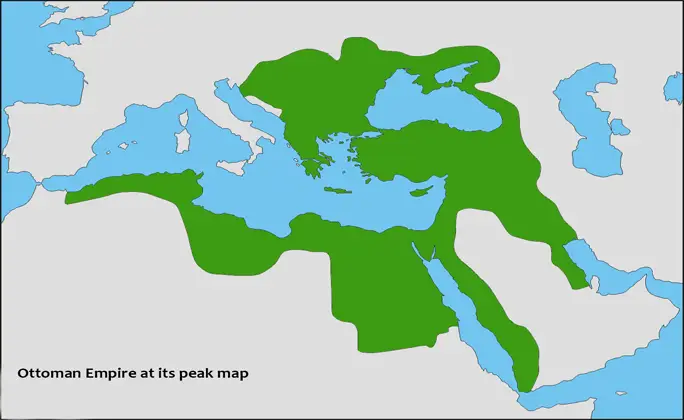
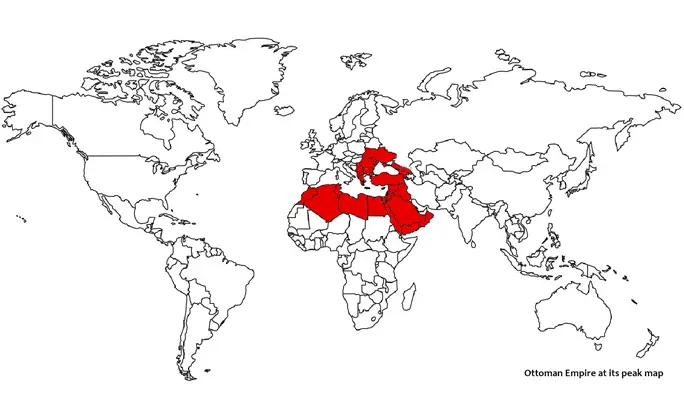
Frequently Asked Questions About Map of Ottoman Empire and Ottoman Empire Periods
When was the Ottoman Empire founded?
The Ottoman Empire was established in Bilecik – Söğüt in 1299 after the Anatolian Seljuk state collapsed.
How many sultans did the Ottoman Empire have?
The Ottoman Empire was ruled by 36 sultans in total. While its founder and the first sultan were Osman Gazi, the last Ottoman sultan was Sultan Vahdettin.
When were the Ottoman Empire’s largest borders?
The widest borders of the Ottoman Empire reached in 1683.
The borders reached as far as Central Europe, the whole of the Balkans, North Africa, the Middle East, and the Caucasus.
How many km is the peak map of the Ottoman Empire?
When the Ottoman Empire reached its peak, it had an area of 5,200,000 square kilometers.
When was the Ottoman Empire at its peak?
The peak of the Ottoman Empire is the reign of Suleiman the Magnificent between 1520 and 1566. During this period, many lands were gained in Europe, the Middle East, and North Africa.
How big was the Ottoman Empire at its peak?
At its peak, the Ottoman Empire had vast territories stretching as far as Europe, Asia, and Africa. It reached its brightest and most extensive period during the reign of Suleiman the Magnificent. At the height of the Ottoman Empire, its borders reached Austria in the West, Iran in the East, and all of North Africa.
Arabs lived under the Ottoman Empire for many years. For this reason, Turks and Arabs are very confused. If you are asking this question, Are Turkish people Arabic? We recommend that you read our article.
Continue Reading
-> Turkish lace & Turkish needle lace
-> Traditional Turkish Dresses
-> Turkish Hammam
-> Turkish Oil Wrestling
-> Traditional Turkish Coffee
